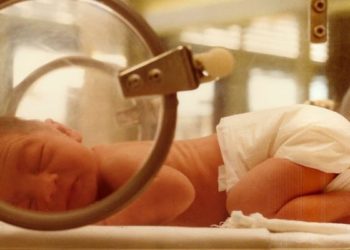Low-cost filtered-sunlight therapy noninferior to conventional phototherapy in neonatal hyperbilirubinemia
1. Filtered-sunlight therapy was noninferior in comparison to conventional phototherapy for decreasing total serum bilirubin in infants older than 72 hours of age.
2. Filtered-sunlight therapy, a far cheaper treatment modality, and conventional phototherapy had similar safety profiles.
Evidence Rating Level: 1 (Excellent)
Study Rundown: Severe neonatal hyperbilirubinemia, often leading to kernicterus and devastating neurologic outcomes, affects almost half a million infants annually. It disproportionately affects those in sub-Saharan Africa. Standard treatment of this condition relies on phototherapy; however, equipment for conventional phototherapy is often unavailable in less developed regions. Filtered sunlight has been studied as a potential alternative for reducing total bilirubin.
In this randomized, controlled trial, term and late-preterm neonates at an inner-city hospital in Lagos, Nigeria were randomized to treatment with filtered sunlight therapy or conventional phototherapy. Patients assigned to the filtered sunlight intervention were placed under film canopies that filter out most ultraviolet and some infrared light. The authors found that filtered sunlight therapy was noninferior to standard phototherapy (efficacy of 93% compared to 90% respectively). There were no differences in safety outcomes between the trial arms.
This study provides solid evidence that filtered sunlight therapy is noninferior to conventional phototherapy in the treatment of neonatal hyperbilirubinemia. The greatest drawback of the study is that there were few neonates with severe hyperbilirubinemia (>15 mg/dl), who are at a greater risk of developing kernicterus.
Click to read the study in NEJM
Relevant Reading: Maternal satisfaction with a novel filtered-sunlight phototherapy for newborn jaundice in Southwest Nigeria
In-Depth [randomized controlled trial]: In this RCT, 213 infants received a total of 268 days of filtered-sunlight therapy and 220 infants received 325 total days of conventional phototherapy. The primary end point was efficacy, defined as a rate of increase in total serum bilirubin of <0.2 mg/dL/hr for infants up to 72 hours of age and a decrease in total serum bilirubin in infants older than 72 hours of age. Need for exchange transfusion therapy was the secondary end point. There were no significant differences between groups at baseline. The median gestational age in both groups was 38 weeks, and the initial total serum bilirubin on day 1 was 5.9 and 6.2 mg/dL in each group. Filtered sunlight was efficacious in 93% (95% [CI], 89 to 96) of treatment days compared to 90% (95% [CI], 86 to 93) for conventional phototherapy; these findings were consistent across both as-treated and per-protocol analyses. There were significantly more infants with axillary temperatures exceeding 38.0ºC in the filtered-sunlight group compared to the conventional phototherapy group (5% vs. 1%, p<0.001). There were no infants withdrawn for safety reasons in either group, and no infants required transfusion therapy.
Image: PD
©2015 2 Minute Medicine, Inc. All rights reserved. No works may be reproduced without expressed written consent from 2 Minute Medicine, Inc. Inquire about licensing here. No article should be construed as medical advice and is not intended as such by the authors or by 2 Minute Medicine, Inc.




